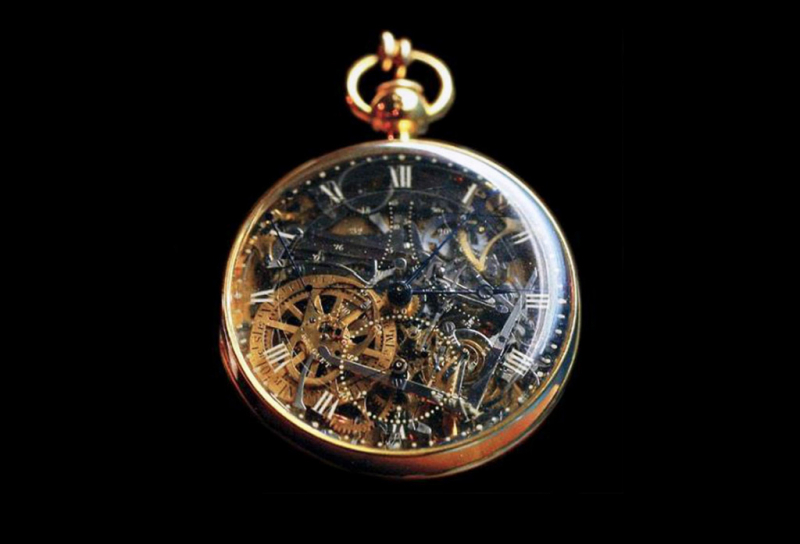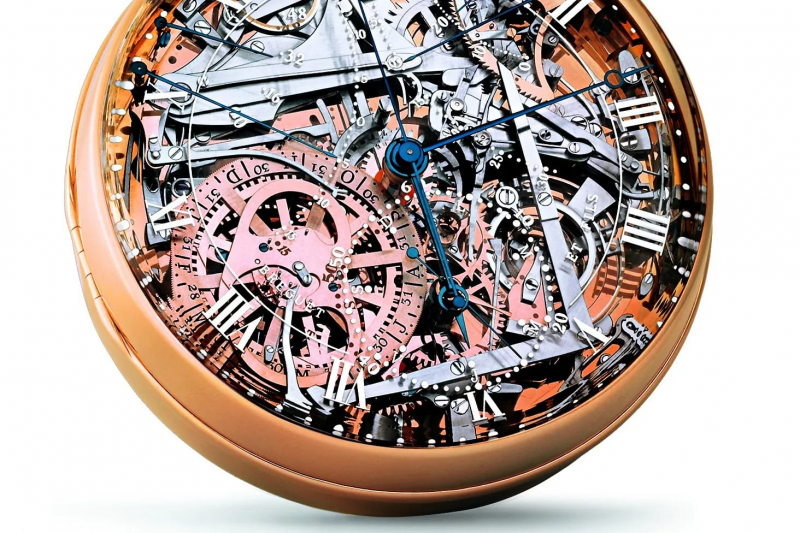Breguet Grande Complication Marie

The Breguet Grande Complication Marie was designed by Swiss watchmaker Abraham Louis Breguet and known as Marie-Antoinette. The watch's manufacture began in 1783 after a mysterious admirer ordered it as a gift for the Queen and it was completed in 1827 by Breguet's son following his father's death.
The Marie-Antoinette perpétuelle, or self-winding, watch boasts a minute repeater that strikes hours, quarters, and minutes on demand, as well as a full perpetual calendar that shows the date, day, and month at two, six, and eight o'clock, respectively. An equation-of-time display at ten o'clock shows the difference between civil and solar time. A huge independent seconds hand, the predecessor to the chronograph hand, is located in the center, while a subdial for the running seconds is located at six o'clock. A bimetallic thermometer and a 48-hour power-reserve indication are placed next to each other.
The self-winding movement (named perpétuelle in Breguet's day) is made up of 823 parts and components, all meticulously polished. Every working part of the motion-work, calendar and repeater mechanisms are built of wood-polished pink gold plates, bridges, and bars. Blued and polished steel screws are used. Sapphires are used in all friction points, sinks, and bearings. The watch's advanced design includes a natural lift escapement, a gold cylindrical balance spring, and a bimetallic balance. The balance-wheel staff and the oscillating weight arbors are protected from blows and jarring by a double pare-chute shock-protection system.
Price: $10 million






